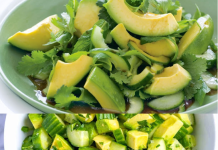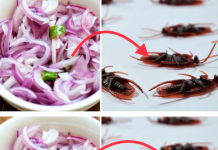In the realm of household management, where efficiency meets innovation, it’s remarkable how everyday items like aluminum foil can become unsung heroes in the quest for practical solutions. While its primary role may be in food preservation or cooking, aluminum foil boasts a versatility that extends far beyond the kitchen. Among its many surprising applications, one particularly noteworthy use emerges: restoring the shine to dull and tarnished cutlery.
Imagine this: you open your kitchen drawer, eager to retrieve your favorite silverware for an elegant dinner party or a cozy family meal, only to find them lacking their former brilliance. Years of use, exposure to air and moisture, and the inevitable wear and tear have left your once-gleaming utensils looking tired and lackluster. It’s a common dilemma faced by many, yet the solution may be simpler than you think.
Enter aluminum foil, that unassuming roll tucked away in your pantry or drawer, ready to come to the rescue. But how does a thin sheet of metal foil hold the key to rejuvenating your cutlery collection? The answer lies in a combination of science, chemistry, and a touch of household ingenuity.
Firstly, let’s understand the science behind the tarnishing process. Silver, the primary component of most traditional cutlery, reacts with sulfur compounds present in the air, water, and certain foods to form silver sulfide—a dark substance responsible for the characteristic dullness and discoloration of tarnished silverware. This chemical reaction is accelerated by factors such as humidity, temperature fluctuations, and exposure to acidic substances.
Now, here’s where aluminum foil works its magic. When combined with a solution containing water, baking soda, and a dash of salt, aluminum foil undergoes a process called ion exchange. Essentially, the aluminum in the foil reacts with the silver sulfide on the surface of the cutlery, transferring the tarnish from the silver to the aluminum. This leaves the silverware looking noticeably brighter and more polished, as if by alchemical enchantment.
But the benefits of using aluminum foil for cutlery restoration extend beyond mere aesthetics. Unlike harsh chemical cleaners or abrasive polishing compounds, this method is gentle yet effective, posing minimal risk to the delicate surface of your silverware. It’s also an environmentally friendly alternative, reducing the need for disposable cleaning wipes or single-use products that contribute to plastic waste.
Moreover, the versatility of aluminum foil allows for creative adaptations of this technique. For instance, you can use it to clean not just cutlery, but also other silver or metal items such as jewelry, coins, or decorative objects. Simply adjust the size and shape of the foil to accommodate the item you wish to polish, and follow the same basic steps for a sparkling result.
Furthermore, incorporating aluminum foil into your household cleaning routine can lead to unexpected discoveries and innovative solutions. Beyond cutlery restoration, you might find that it’s also effective in removing stubborn stains from pots and pans, eliminating odors from the refrigerator, or even sharpening scissors—a testament to the ingenuity of everyday materials.
CONCLUSION :
In conclusion, the revitalization of cutlery with aluminum foil is not just a practical household tip, but a testament to the transformative power of simple solutions. By harnessing the properties of aluminum foil and combining them with common household ingredients, you can breathe new life into your aging utensils while minimizing waste and environmental impact. So, the next time you reach for that roll of aluminum foil, consider the myriad possibilities it holds beyond the realm of food preparation. With a little creativity and resourcefulness, you’ll uncover a world of hidden potentials—one shiny fork at a time.
SOURCE OF THE PICTURE : homeremediesseasy










